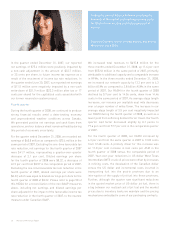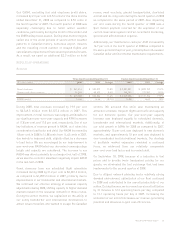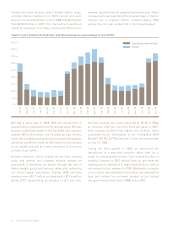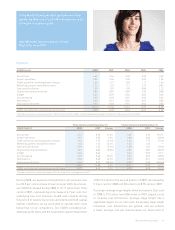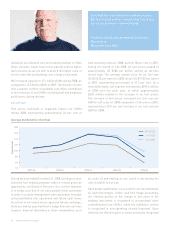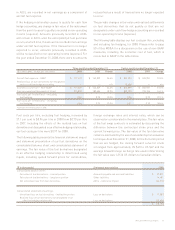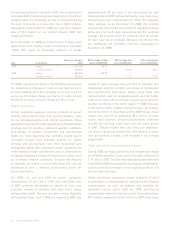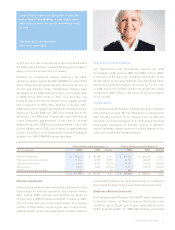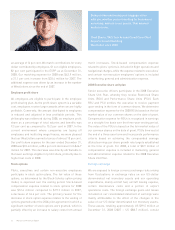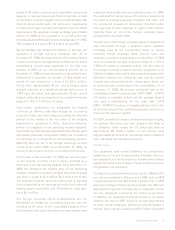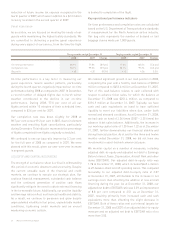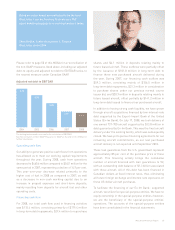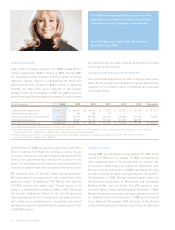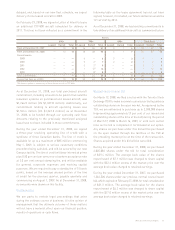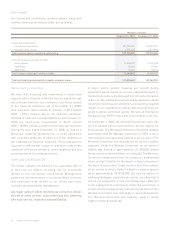Westjet 2008 Annual Report Download - page 32
Download and view the complete annual report
Please find page 32 of the 2008 Westjet annual report below. You can navigate through the pages in the report by either clicking on the pages listed below, or by using the keyword search tool below to find specific information within the annual report.
28 WestJet 2008 Annual Report
total operating costs for 2008, up from 28 per cent in 2007.
During the month of July 2008, jet fuel prices peaked at
approximately US $180 per barrel, setting an all-time
record high. The average market price for jet fuel was
US $125.02 per barrel in 2008 versus US $91.05 per barrel
in 2007, representing an increase of 37.3 per cent. On a
total dollar basis, fuel expense increased by $299.4 million
in 2008 over the prior year, of which approximately
$220 million related to the increase in jet fuel prices.
The increase in fuel prices increased our fuel cost per
ASM to 4.69 cents for 2008 compared to 3.46 cents in 2007,
representing a 35.5 per cent increase in our fuel cost per
ASM for 2008.
operations are allocated over an increasing number of miles
fl own. Likewise, longer-haul routes typically achieve higher
fuel economy, as we are able to absorb the higher costs of
fuel for take-offs and landings over a longer trip length.
We increased capacity to 17.1 billion ASMs during 2008, as
compared to 14.5 billion ASMs in 2007. The dilution of costs
over a greater number of available seat miles contributed
to the reduction of our CASM, excluding fuel and employee
profi t share, during the year.
Aircraft fuel
Fuel prices continued to negatively impact our CASM
during 2008, representing approximately 36 per cent of
Average market price of jet fuel
180
160
140
120
100
80
60
40
2007 Q4 2008 Q1 2008 Q2 2008 Q3 2008 Q4
$ per barrel
WTI (USD)
Jet (USD)
Jet (CAD)
Sure, high fuel costs have been tough on everyone.
But to us it’s just another reason to stay true to how
we run our business – calm and steady.
Frederick Arends, Aircraft Material Coordinator
Maintenance
WestJetter since 2003
During the year ended December 31, 2008, we began a more
extensive fuel hedging program under a revised policy as
approved by our Board of Directors. Our current objective
is to hedge a portion of our anticipated jet fuel purchases
in order to provide management with reasonable foresight
and predictability into operations and future cash fl ows.
As jet fuel is not traded on an organized futures exchange,
there are limited opportunities to hedge directly in jet fuel;
however, fi nancial derivatives in other commodities, such
as crude oil and heating oil, are useful in decreasing the
risk of volatile fuel prices.
Upon proper qualifi cation, we account for our fuel derivatives
as cash fl ow hedges. Under cash fl ow hedge accounting,
the effective portion of the change in fair value of the
hedging instrument is recognized in accumulated other
comprehensive loss (AOCL), while the ineffective portion
is recognized in non-operating income (expense). Upon
maturity, the effective gains or losses previously recognized








